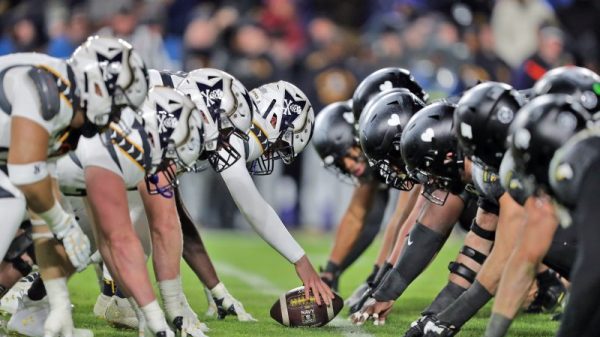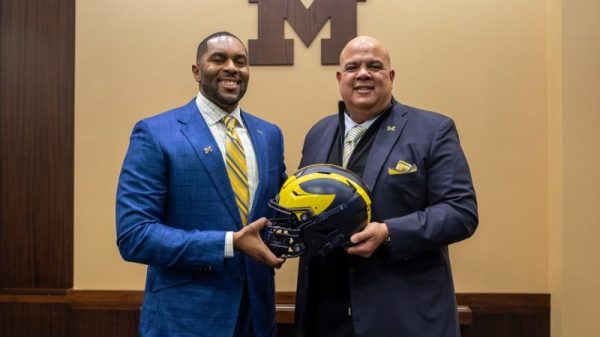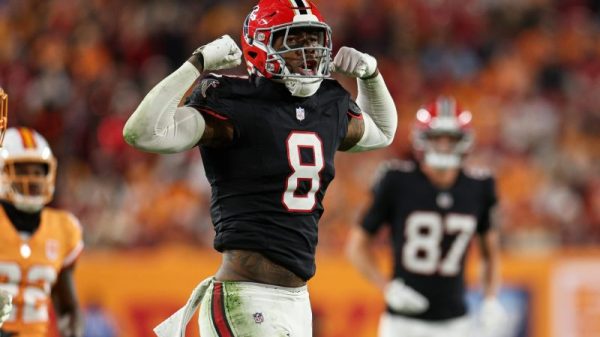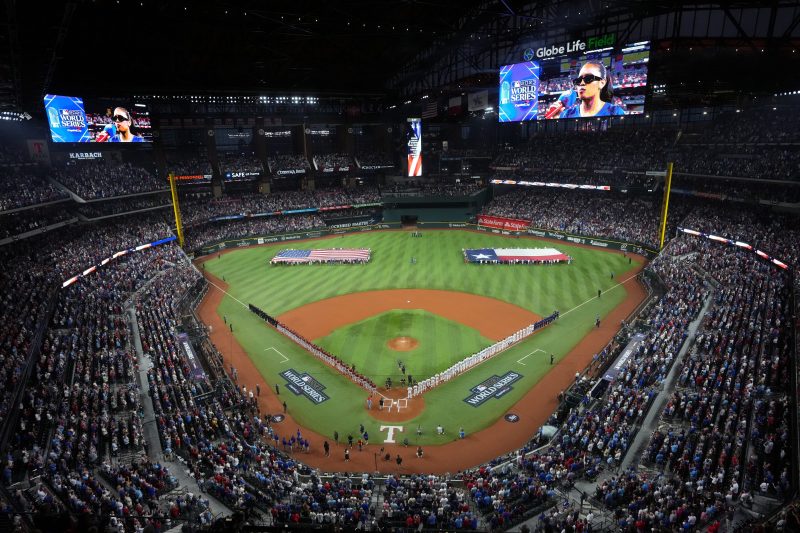PHOENIX — This unlikely World Series pairing is a study in contrasts far beyond the talent on the field.
The Texas Rangers pulverize the baseball, lean on a bevy of well-heeled stars – and call a $1.2 billion palace of creature comforts home.
The Arizona Diamondbacks rely on speed and daring and the occasional home run, most of it produced by a homegrown core – and play in a facility badly in need of renovations, teetering on the brink of obsolescence in baseball’s modern economics.
For now, the Rangers have what the Diamondbacks want, and that extends far beyond their 2-1 Series lead.
They have Globe Life Field, a den of opulence stretching across 13 acres and 1.8 million feet, constructed in time for the 2020 season with the help of a $500 million commitment in public funds from suburban Arlington.
FOLLOW THE MONEY: MLB player salaries and payrolls for every major league team
Just down the street, there is Texas Live!, 200,000 square feet of dining, entertainment and accommodations, a public-private partnership that stadium-hungry teams dream about and franchise owners revere because the revenue generated does not count as baseball-related income.
“There are several other ballclubs that have tried doing what we’re doing: Building a district,” says Neil Leibman, the Rangers’ club president and chief operating officer who helped guide the Globe Life Field construction.
“We’re not in a city, so we have to build a city around us. That’s the goal.”
Meanwhile, the Diamondbacks have the urban setting so many clubs desire, in downtown Phoenix, the fifth-largest city in the USA. There’s adjacent sports books and the potential for almost year-round sports connectivity with the Suns’ and Mercury’s Footprint Center barely a half-mile away.
Yet they also have Chase Field, once a shining modern facility that was brand new for the Diamondbacks’ expansion season of 1998. Season attendance of 3 million came immediately, and a 2001 World Series championship was not far behind.
But stadiums age. Chase Field’s most urgent needs include new lighting and repairs to its retractable roof, so that it can safely close when paying customers are in the building.
There are no ribbon-cuttings or commemorative patches for stadium renovations, which can run in the hundreds of millions of dollars and which both taxpayers and teams are loathe to fund – as municipalities like Milwaukee and Baltimore are finding out.
“We certainly don’t want to have our hand out,” says Derrick Hall, the Diamondbacks’ president and CEO. “But I do think we’re going to need some sort of help. We’re willing to put a lot of money in. And we plan on doing so. We really need to upgrade this place to be more of a 365-day facility.
“Today, it’s not just the standalone ballpark – it’s mixed-use, hotels, restaurants, bars, retail. We need to get to that. But we’ll need some help.
“I want to be respectful, but if there’s assistance we can get, be it from city, county, state, it’s warmly welcomed.”
It will be far more challenging than the state of play in North Texas.
Ballparks on the ballot
In a way, the Rangers used Jerry Jones and the Dallas Cowboys as a lead blocker.
Their previous stadium, The Ballpark in Arlington (also known by various corporate names, some of them infamous), was a gorgeous venue that was part of the early 1990s stadium renaissance. Yet it lacked a key weapon against the stultifying Texas heat and the many pop-up storms and flash floods that inundate North Texas: A roof.
So the bid to find money for what became Globe Life Field was on, with a full-court lobbying press and some provincial fear-mongering that Dallas – the big D in DFW – could swipe the Rangers from Tarrant County.
The ask was significant: About $500 million in taxes, although the sum could end up far greater, as it often does in stadium financing.
The optics helped: These weren’t new taxes, per se, merely an extension of a half-cent sales tax, 2% hotel-occupancy tax and 5% car-rental tax that already went toward defraying Arlington’s $155 million debt for Jones’ AT&T Stadium, a palatial home to the Cowboys that opened in 2009, a few long punts from Globe Life’s site.
Voters approved the measure by a 60-to-40-percent margin, and franchises like the Kansas City Royals are hoping to utilize the extension maneuver in their own markets.
The terrain is tougher in the desert.
Most recently, the NHL’s Coyotes were embarrassed at the polls when voters in the city of Tempe roundly rejected ballot measures to support the Coyotes’ $2.1 billion project for an arena, apartments and entertainment district. The opposition group prevailed with a budget of just $35,000.
The Coyotes are now looking to buy land in Mesa and build the “first privately funded sports facility in Arizona history.”
The Suns fared a little better: They faced vigorous public opposition that delayed a Phoenix city council vote, before the city and team settled on $150 million in arena renovations, with the team contributing $80 million along with greater support for various community programs.
And the Diamondbacks have had their tussles: In 2016, they sued Maricopa County for $187 million, seeking renovation costs, but settled in 2018 with an agreement that the club could look beyond Chase Field for a home in the Valley of the Sun.
“We have a lot of plans in mind for when we know where we’re going to be,” says Hall. “If we know we’re going to be here, we’re ready to go.”
Home cooking
When the Diamondbacks visited Globe Life for the first two games of this World Series, the level of comfort was startling – even for the visiting team.
A clubhouse staff waiting to shake their hands every day when they come in. A game room with pingpong and a hoop shoot. Brochures for the finest restaurants.
And when they emerge from the shower – heated towels!
“It’s one of the few places in the league that has that,” says Arizona reliever Ryan Thompson. “What I like about Globe Life was the big feel, the grand feel – how tall the roof is.
“It just feels big time.”
And he didn’t even see the home clubhouse – a 44,000-square foot ballplayer nirvana.
There’s a barbershop, a media room, sleep pods for players, a recovery room, with cryo-chambers, red light therapy, and the usual hot and cold tubs and sauna.
“It’s nothing like I’ve experienced before,” says Rangers outfielder Travis Jankowski, a nine-year big leaguer who has played for six franchises. “The facilities we have on the home side are second-to-none.
“Whatever anyone told the owners, ‘Hey, this will help the guys win,’ bang – it’s there.”
And the Rangers are spending like it.
One year after COVID-19 waylaid Globe Life’s opening season – “A Christmas present we couldn’t unwrap that morning,” says Leibman – owner Ray Davis filled his grandiose home with ballplayers to match. He spent $556 million to bring in a superstar middle infield – shortstop Corey Seager and second baseman Marcus Semien – along with pitcher Jon Gray.
That trio essentially accounted for the Rangers’ 3-1 Game 3 victory Monday.
More than $200 million was committed this past winter to import pitchers Jacob deGrom and Nathan Eovaldi, the latter starting Games 1 and 5 of the World Series.
In Arizona, they’re just hoping the HVAC holds up.
Yep, the Diamondbacks’ home is climate-controlled, but as the Valley only grows hotter, the team’s reliance on a centralized downtown cooling system is being put to the test. Starting pitcher Merrill Kelly has had multiple starts truncated due to cramping, and the extreme heat, even with the roof closed and the AC humming, presents a greater challenge than outdoor stadiums in the summertime.
“I know it’s still hot out there and it’s still a big metal box that we’re in,” Kelly said after leaving a September start early, “but I’m definitely sweating more here than I am other places.”
Still, there are some charms to the sort-of old yard, which may look different in terms of which fans it caters to in the future.
‘We built this right’
Is there such a thing as a bad ballpark?
Thompson came from one of the worst, pitching home games at Tampa Bay’s Tropicana Field for four seasons. Still, the big leagues are the big leagues – and Chase felt like a big upgrade.
“I don’t have a problem with Tropicana. I love Tropicana,” says Thompson. “But it feels like the clubhouse here is three times the size. Our lockers are twice as big. The stadium feels nicer.
“This was one of the four or five places I’d never been. It kind of blew me away.”
It remains a perfectly suitable place to watch a ballgame, with a greater sense of connection than many ballparks. You can walk from the main concourse right on down to the finest seats behind home plate, no moat protecting the most expensive seats from the less desirable.
It was particularly postcard-perfect for Monday’s Game 3, with more than 48,000 fans filling the place, the roof open on a perfect night, the Fox Sports cameras capturing some lovely overhead shots.
Yet most nights are not like Game 3.
The Diamondbacks drew less than 15,000 fans for 12 of 81 home dates, and their respectable per-game average of 24,212 means even on a decent night, the place is half-empty.
In the club’s perfect world, the place is renovated to feature greater luxury seating options, a smaller capacity overall – and ancillary team-controlled development beyond its walls.
Kind of like the guys across the field this week.
“I think all these new facilities are a bit of an advantage,” says Hall. “The revenues have gone way up. From a competitive standpoint, that helps them.
“I also think in a modern facility like Globe Life, it really caters to a lot of the premium, which the older ballparks like ours just don’t have. So you’re not going to have a lot of corporate involvement. You’re not going to have a lot of those lounges and VIP sections and clubs.
“They’ve got all that so they can really take advantage of that.”
But can it defy the trend of stadiums barely making it to a third decade?
While Globe Life feels forever, so, too, did The Ballpark. Leibman feels confident his new toy will outlast its predecessor, which sits visible through Globe Life’s outfield glass, still home to high school and college football games, a reminder of impermanence.
“We’re good for 30 years and if we have to renovate after 30, we’ll renovate,” says Leibman. “But I think the design is so unique. Most stadiums are built at an angle. Ours is built more like a fishbowl – the higher up you are, you’re not far enough from the game.
“I think we built this right.”



























